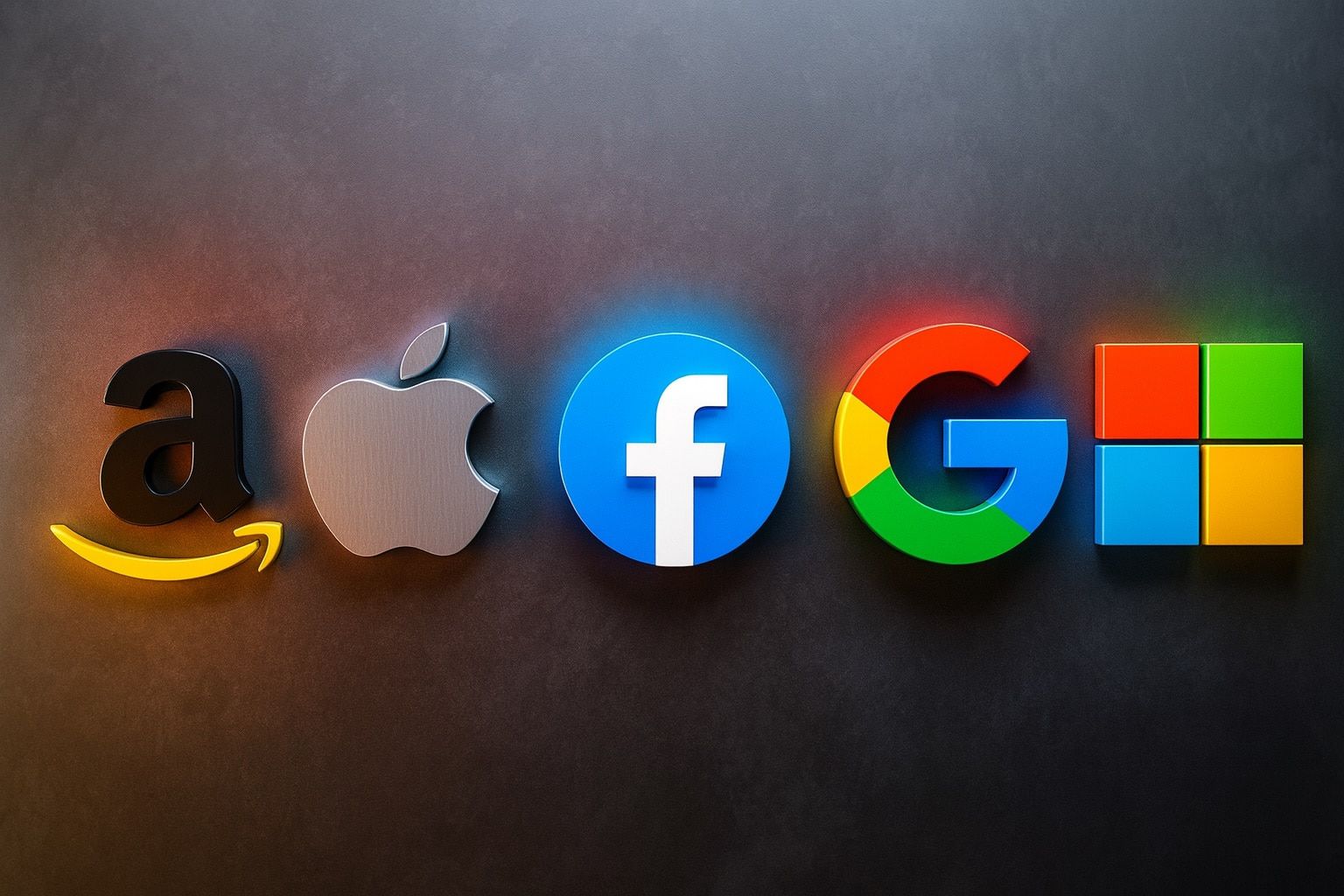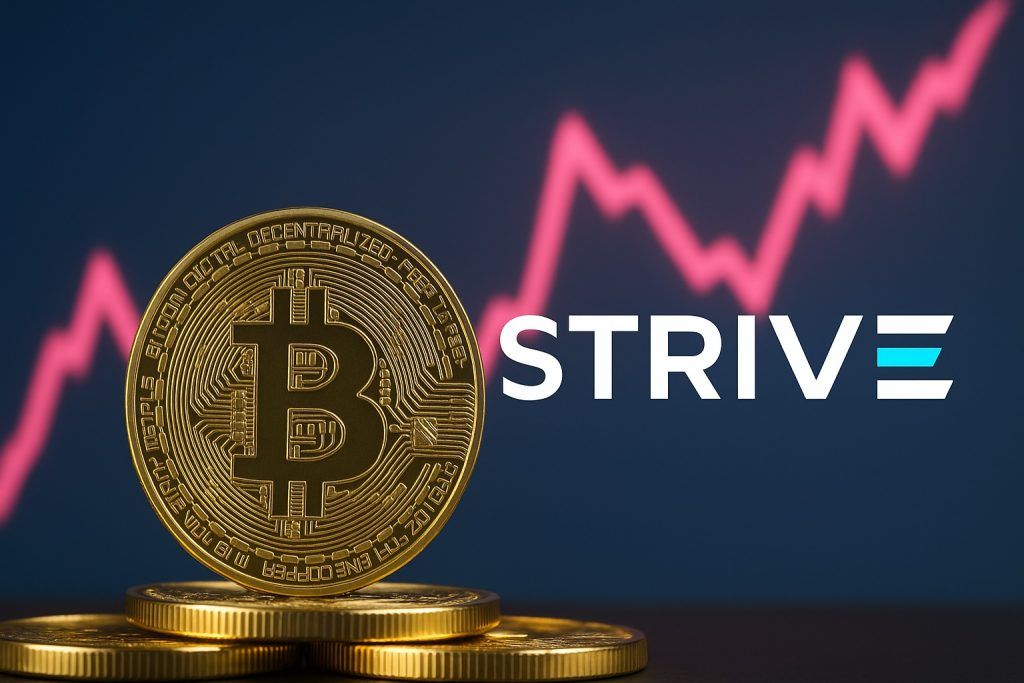- Stocks at Record Highs: Wall Street is coming off fresh all-time highs. The Dow Jones Industrial Average closed above 47,000 for the first time last week [1], after cooling inflation data reinforced expectations that the Federal Reserve will cut interest rates this week [2]. All three major U.S. indexes surged ~2% on the week to record levels.
- Fed Meeting on Wednesday: The Fed’s policy committee meets Oct. 29, and markets overwhelmingly expect a 0.25% rate cut – which would be the second cut this year – bringing the benchmark rate down to ~3.75–4.00% [3]. Investors will watch Fed Chair Jerome Powell’s press conference closely for clues on whether further easing is coming or if this might be a “one-and-done” move [4].
- Tech’s Turn to Deliver: A wave of megacap tech earnings is set to hit. Microsoft, Alphabet (Google) and Meta Platforms will report results on Wednesday, followed by Apple and Amazon on Thursday [5] [6]. These five companies – part of the “Magnificent Seven” – have powered this year’s stock rally, and their guidance on cloud spending and AI trends will be critical [7].
- U.S.-China Trade Breakthrough? Later this week, President Donald Trump is slated to meet Chinese President Xi Jinping in South Korea, where the two leaders are expected to finalize the framework of a trade deal hashed out by negotiators over the weekend [8]. The potential agreement would halt new U.S. tariffs and ease Chinese export curbs (like on rare-earth metals) [9]. The White House’s confirmation of the Trump-Xi summit already boosted market sentiment late last week [10].
- Cautious Optimism: Despite the positive drivers, analysts urge caution. The ongoing U.S. government shutdown (now entering its fourth week) has left Fed officials “just flying blind” without fresh economic data [11]. Meanwhile, the AI stock frenzy has some experts warning of “signs of a bubble” in tech valuations [12] – making this week’s events a crucial test of whether the market’s optimism is truly justified.
Markets Soar to Record Highs on Fed Hopes and Trade Optimism
Investors head into this pivotal week riding a wave of market euphoria. Last Friday (Oct. 24), U.S. stocks roared to new record highs across the board. The Dow Jones Industrial Average jumped about 400 points (+0.8%) to close at an all-time peak, while the S&P 500 climbed 0.8% and the Nasdaq Composite 1.0%, both also notching record closes [13]. All three major indexes gained roughly 2% over the course of the week [14], capping a rally fueled by encouraging economic news.
The catalyst: fresh evidence that inflation is cooling. The U.S. Consumer Price Index (CPI) for September rose just 3.0% year-on-year (slightly below the 3.1% expected), marking a continued downtrend in price pressures [15]. On a monthly basis, prices grew a modest 0.3%, with easing increases in rents and services offsetting a jump in gas prices [16]. This tamer inflation reading bolstered confidence that the Fed will finally pivot to easier policy. Traders are now pricing in nearly a 90% probability that the Fed will cut interest rates at its October 29 meeting [17]. “U.S. consumer prices increased slightly less than expected in September… keeping the Fed on track to cut interest rates again next week,” Reuters noted in its market summary [18].
Tech stocks led the charge in the latest rally. Investors rotated aggressively into growth and AI-related names, which have been the year’s big winners. On Friday, semiconductor shares exploded higher – AMD surged ~6.5% and Nvidia jumped 4.2% to an all-time high [19] [20] – after both chipmakers beat earnings expectations and issued upbeat outlooks. Other tech giants climbed in sympathy: Intel rose 3.8%, Micron 3.1%, Apple 2.6%, and Microsoft 2.4% on the day [21]. In contrast, more defensive sectors sat out the rally or slipped. Industrial and energy stocks lagged as oil prices pulled back – e.g. Boeing fell ~2.1%, Exxon Mobil –1.8%, Chevron –1.6% – highlighting investors’ risk-on appetite for tech over cyclicals at the moment [22] [23]. “It’s just a continuation of a broadly supportive environment for equities,” observed Peter Fitzgerald, Macro CIO at Aviva Investors, noting the low-volatility, pro-growth backdrop underpinning stocks [24].
The upbeat mood has carried over into global markets at the start of this week. Asian shares kicked off Monday with a bang: Japan’s Nikkei index breached the 50,000 mark for the first time ever, and South Korea’s KOSPI index jumped above 4,000, as signs of a U.S.-China trade truce boosted risk appetite across the region [25]. Meanwhile, European stocks hit new heights of their own. The pan-European STOXX 600 index edged up to intraday record levels on Monday, extending last week’s gains [26]. European mining and tech sectors led the advance, while safe-haven assets like gold and government bonds have pulled back amid the rush into equities [27]. Even with indices at records, some strategists are advising vigilance. They point out that valuations are getting stretched in certain areas – enthusiasm for all things AI has driven speculative excess, with “signs of a bubble” emerging as money chases the hottest tech plays [28]. Still, for now the bulls remain firmly in control, and market momentum is undeniable.
Fed Set to Cut Rates at Crucial Meeting
Attention now turns to the Federal Reserve, which faces a high-stakes interest rate decision on Wednesday (Oct. 29). All signs point to a rate cut. Fed officials are widely expected to reduce the Fed’s policy rate by 25 basis points (0.25%) at this meeting [29] – a move that would mark the second rate cut of 2025, after an initial trim earlier this fall. Such a cut would bring the target federal funds rate down to roughly 3.75%–4.00% [30]. It’s a striking shift in stance for the central bank, which had spent most of the past two years hiking rates aggressively to fight inflation. But with price pressures finally easing and economic growth showing signs of cooling, the Fed now appears ready to pivot toward easing.
Why cut now? In short, inflation has moderated, and the Fed wants to insure against a sharper slowdown. U.S. core inflation is running about ~3.0% – still above the Fed’s 2% goal, but much lower than the 5%+ levels seen in 2022 – which “leaves room” for policymakers to gently lower borrowing costs without risking an inflation resurgence [31]. The slightly softer CPI data for September reinforced this case, emboldening expectations for not just one but possibly multiple rate cuts in coming months [32] [33]. “Market watchers expect the Federal Reserve to reduce interest rates for a second time this year when it concludes its meeting on Wednesday,” Investopedia noted, with an anticipated quarter-point cut largely priced in [34]. Fed Chair Jerome Powell will announce the decision at 2pm Washington time on Oct. 29, followed by a press conference where he’ll undoubtedly be pressed on what comes next – i.e., will the Fed signal another cut in December or adopt a wait-and-see approach.
One complicating factor for the Fed is the ongoing U.S. government shutdown, which has partially paralyzed federal data reporting. With many economic releases delayed, the Fed is flying with limited visibility. “Policymakers are just flying blind without fresh jobs or inflation figures” due to the data drought from the shutdown, warned David Seif of Nomura [35]. Indeed, key reports like the September jobs report, retail sales, and trade statistics have been postponed, leaving Fed officials to rely on private indicators and anecdotes to gauge the economy’s health [36]. Despite this handicap, there is a general consensus on the need for some preemptive easing: futures markets imply nearly 100% odds of a quarter-point cut this week and even price in a decent chance of another cut by December [37].
Internal debates persist at the Fed, however. Not all officials are equally dovish. Some, like veteran Kansas City Fed leader Esther George, have cautioned that interest rates might already be “at the right place” to tame inflation, arguing against doing too much [38]. But others on the Board (e.g. recently appointed Governor Stephen Miran) contend that current rates are “far too high” and that inflation is about to fall rapidly, necessitating swift cuts [39]. This split underscores the delicate path Powell must navigate. His post-meeting remarks will be scrutinized for any hint of future rate moves: will the Fed signal a pause after this cut, or keep the door open to additional easing if inflation continues to surprise on the downside? Also critical is how the Fed frames the economic outlook – whether it emphasizes the recent softness in the labor market and prices as justification for relief, or stresses that policy will remain data-dependent and vigilant on inflation.
For markets, a 25 bp cut is largely expected and likely already baked into asset prices. The bigger risk (or opportunity) lies in the tone of Powell’s guidance. A reassuring message – that the Fed stands ready to support growth and sees inflation trending down – could further boost equities and bonds, reinforcing the “Fed put” narrative. Conversely, if Powell sounds noncommittal or highlights concerns (for instance, that core inflation at ~3% is still too high, or that a tight job market could re-ignite price pressures), investors might react negatively. Harun Thilak of Validus Risk Management noted that Friday’s inflation miss “should further embolden expectations” for another cut in December, especially if labor data remains sluggish [40]. But absent data due to the shutdown, the Fed must rely on anecdotal evidence – a precarious situation that could make officials cautious. All told, Wednesday’s Fed decision and commentary represent a potential turning point for monetary policy. Either the central bank will confirm the market’s dovish hopes, or it could inject a dose of sobriety. As always, Powell’s words may end up moving markets as much as the rate cut itself.
Tech Titans’ Earnings to Test the Rally’s Foundation
Even as the Fed captures headlines, some of the world’s largest companies will be demanding Wall Street’s attention with their quarterly earnings – a convergence of events that sets up the “midweek double whammy” investors have been anxiously anticipating [41]. This week, five of the “Magnificent Seven” mega-cap tech firms – Microsoft, Alphabet (Google’s parent), Meta Platforms (Facebook’s parent), Amazon, and Apple – will report results for the July–September quarter. The only two of the top seven not reporting this week are Nvidia (which already posted blowout earnings earlier) and Tesla (which reported last week) [42]. These five tech giants collectively account for an astonishing one-third of the S&P 500’s market capitalization [43], so their performance and guidance can single-handedly sway the direction of the market.
The earnings schedule: Microsoft, Alphabet, and Meta will unveil their numbers on Wednesday, October 29 – just hours after the Fed decision – making for an eventful evening. The next day, Thursday Oct. 30, Apple and Amazon are set to report after market close [44] [45]. This concentrated lineup of Big Tech earnings is unusual and significant. It means by the end of Thursday, investors will have fresh insight into the health of the tech sector that has led 2025’s rally. Year-to-date, the “Magnificent Seven” stocks have vastly outperformed the broader market, thanks in large part to excitement over artificial intelligence and resilient demand for digital services [46]. Their valuations have swelled accordingly. Now comes the moment of truth: can their actual financial results justify the hype?
So far, expectations are optimistic but measured. Wall Street analysts do expect robust growth from these tech titans, though not as heady as in previous quarters – a sign that the earnings edge of Big Tech has narrowed somewhat relative to other companies. Still, the Magnificent Seven are projected to post stronger profit gains than the average S&P 500 firm this quarter, maintaining their leadership albeit by a slimmer margin [47]. And early earnings reports from peers have been encouraging: last week, fellow “Seven” member Tesla saw its stock rebound despite a profit miss (helped by reassuring long-term outlook comments) [48], and Intel surprised with a blockbuster profit beat that sent its shares up 8% in pre-market trading [49]. Those results set a mixed but mostly positive tone.
Each of the Big Five reporting this week has its own storylines that investors will be watching:
- Microsoft (MSFT): As the world’s second-largest company by market cap, Microsoft is seen as an industry bellwether. This quarter, investors will zero in on its booming cloud and AI initiatives. Notably, Microsoft recently announced a massive $40 billion investment in cloud infrastructure, including a deal to build new AI data centers in partnership with chipmaker Nvidia [50]. This suggests Microsoft is doubling down on artificial intelligence services (like its OpenAI collaboration and Azure AI offerings). Investors will want to hear how demand is holding up for Azure cloud computing, and whether the AI boom is translating into revenue growth or just higher capex for now. Thus far, early indications are positive – Azure’s growth had re-accelerated last quarter, and Microsoft’s stock is up ~30% YTD. Any commentary on enterprise IT spending trends, AI usage, or the status of the Nvidia partnership could be market-moving.
- Alphabet/Google (GOOGL): Google’s parent has seen its stock rally about 50% this year, as digital ad spending recovered and the company made aggressive moves in AI. In this report, Google’s core advertising business (search and YouTube) will be scrutinized for resilience amid economic uncertainties. But the AI angle is front and center: Google has reportedly been in talks to invest $4 billion in Anthropic, a high-profile AI startup seen as a rival to OpenAI [51]. If confirmed, that deal would underscore Google’s commitment to remain at the cutting edge of AI research (complementing its own in-house AI unit, DeepMind). Investors will look for updates on Google’s Bard AI and cloud AI products, and any color on how generative AI is affecting Google’s costs (AI training is expensive) and opportunities (new AI-powered features in Search, etc.). With the U.S. also currently suing Google over antitrust issues in search, management might address any business impacts there as well.
- Meta Platforms (META): The company formerly known as Facebook has staged a huge comeback in 2025 – its shares have roughly doubled year-to-date. Meta’s earnings will show whether that momentum is warranted. Key points include user growth and monetization on Facebook/Instagram, progress in cost-cutting (CEO Mark Zuckerberg’s “year of efficiency” initiative), and especially Meta’s ventures into AI and the metaverse. This quarter could bring more details on Meta’s recently released AI-powered smart glasses (a collaboration with Ray-Ban) and the company’s broader AI strategy for consumer products [52]. Additionally, any commentary on Reels (Instagram’s TikTok competitor) and threads (Meta’s new text platform) could be in focus. Meta has also been spending heavily on its Reality Labs (VR/metaverse) unit; investors may be relieved if losses there are narrowing. A big question: will Meta’s ad revenue continue its double-digit growth now that Apple’s privacy changes are lapped, or is it slowing with the economy? Meta’s results often move not just its own stock but the entire tech sector’s mood, given its size and reach.
- Apple (AAPL): The world’s most valuable company enters its earnings on a high note. Just last week, Apple’s stock price hit a new all-time high, trading as high as $264.38 per share [53] and vaulting Apple’s market capitalization well above $4 trillion. The surge was fueled by reports of strong demand for the new iPhone 17 series – particularly the iPhone 17 Pro and Pro Max – which launched in September [54]. Investors will see on Thursday if that buzz translates into strong quarterly sales. Analysts expect Apple’s fiscal Q4 revenue to finally return to growth (after a few flat quarters), driven by the iPhone 17 cycle and continued growth in services. Beyond the headline numbers, Apple’s outlook for the holiday quarter (fiscal Q1) will be crucial. Any commentary on supply chain conditions or consumer demand in China (one of Apple’s biggest markets) will be parsed. Given Apple’s stock rally, the bar is high – any hint of softer iPhone sales or a production hiccup could weigh on shares. Conversely, confirmation of booming iPhone 17 sales (and perhaps hints about an upcoming Apple AI initiative, since the company has been relatively quiet on generative AI) could propel Apple even further. Also of note: Apple’s CFO recently warned about a decline in Mac and iPad sales, so watch those segments. But with the iPhone still king – roughly half of Apple’s revenue – that’s where the spotlight will be.
- Amazon (AMZN): The e-commerce and cloud giant has seen its stock jump ~50% in 2025 as well, amid improving profitability in retail and steady growth in Amazon Web Services (AWS). This quarter, Amazon faces some unique questions. One hot topic is the recent AWS outages – in early October, Amazon’s cloud computing platform suffered multiple high-profile service disruptions, which impacted many websites and apps [55]. CEO Andy Jassy may address what went wrong and how Amazon is bolstering cloud reliability. More broadly for AWS, investors will look at its revenue growth rate: last quarter AWS growth was ~12%, the slowest ever, as corporate clients optimized cloud costs. Any re-acceleration (or further slowdown) will be significant for the tech sector. On the retail side, Amazon’s core e-commerce business is expected to show moderate growth and better profits thanks to cost cuts and higher Prime fees. The company’s guidance for the holiday season sales will be a major tell for consumer spending strength. Additionally, Amazon’s advertising business has quietly become a $10+ billion quarterly segment – watch for its growth as a sign of Amazon’s expanding profit drivers. With Amazon’s P/E valuation now rich again, the company likely needs to deliver both solid Q3 results and a confident outlook to keep its stock climbing.
Across all these reports, a few common themes will emerge. Artificial Intelligence is chief among them. From cloud services to consumer devices, AI is now a core part of Big Tech’s growth story. Enthusiasm for AI has been “the main driver of stock market performance” this year [56], so investors are keen to hear how AI is contributing to revenues or efficiency. For example, does Microsoft see a tangible boost in cloud usage from AI applications? Is Google effectively monetizing its AI models? Are Meta’s AI recommender systems lifting user engagement? Any hints that the AI boom is translating into real earnings will be taken as validation of the 2025 rally. Conversely, if management teams sound cautious about AI (e.g. citing high costs or nascent demand), it could dampen some of the exuberance.
Another theme is how these companies are weathering the broader economic cross-currents – higher interest rates (until now), shifts in consumer spending, and global challenges like China’s economic slowdown. So far, U.S. corporate earnings have been surprisingly resilient, especially in tech. “Additionally, earnings have been really strong in general, and that’s supporting the market from a fundamental perspective,” noted Zachary Hill of Horizon Investments [57]. In fact, about 86% of S&P 500 companies that have reported Q3 results so far beat consensus estimates [58] – a very high beat rate. That fundamental strength is a big reason stocks have kept rising. Now, it’s up to the Big Tech quintet reporting this week to keep that trend alive. Their results will either affirm the market’s optimism or give credence to skeptics who say the rally has gotten ahead of itself. “The U.S. earnings season and guidance from big tech will be key to gauging how resilient corporate profits remain in a slowing economy,” said Charu Chanana, a strategist at Saxo, emphasizing how much is riding on these tech giants’ forward-looking comments [59].
Trump-Xi Summit: Trade Truce Finally on the Table
On the geopolitical front, an event that seemed unlikely just a month or two ago is now about to happen: a face-to-face meeting between U.S. President Donald Trump and China’s President Xi Jinping. The two leaders are expected to sit down later this week on the sidelines of a regional summit in South Korea, with the goal of hashing out a long-awaited trade agreement between the world’s two largest economies [60]. This comes after a renewed flare-up in the U.S.-China trade war earlier in the year, which saw both sides ratchet up tariffs and other punitive measures, rattling financial markets and business confidence. In recent days, however, negotiators from Washington and Beijing have been hard at work to broker a truce. Top officials reportedly crafted the framework of a trade deal over the weekend, setting the stage for Trump and Xi to review and potentially finalize it at their meeting [61].
What’s likely in the deal? According to reports, the emerging agreement would effectively hit “pause” on further trade escalation. Specifically, it would halt any new U.S. tariff increases on Chinese goods and simultaneously lead China to suspend or lift certain export restrictions, such as its limits on exporting rare earth metals that are crucial to tech manufacturing [62]. In essence, each side would refrain from upping the ante: the U.S. wouldn’t impose the next round of higher tariffs that were threatened, and China would ease off measures it’s taken in retaliation (like curbing exports of critical minerals and ingredients). Such a truce would prevent additional damage to both economies – benefiting industries from American farmers and automakers (who have been hit by tariffs) to Chinese tech firms (some of which have faced export bans).
The mere prospect of a trade deal breakthrough has already given markets a boost. Late last week, the White House confirmed that Trump will indeed meet Xi during his Asia trip, and that news alone “appeared to ease tensions” and sparked a rally in stocks [63]. “The Trump-Xi confirmation is clearly positive,” said Zachary Hill of Horizon Investments, calling it a good checkpoint for market sentiment after months of on-again, off-again trade fears [64]. Indeed, trade-sensitive assets like semiconductor stocks and commodities jumped when word of the meeting spread. Globally, optimism that Washington and Beijing might finally strike a deal has been cited as a key driver of the recent risk-on wave in equities [65] [66].
Of course, investor expectations must be managed. Markets have “largely viewed a trade deal as the higher-probability outcome” in recent weeks, noted Chris Weston, head of research at brokerage Pepperstone [67]. In other words, many traders are already betting on a truce, which helps explain the strong rally in Chinese stocks and U.S. multinationals lately. Because of this, a basic deal is somewhat priced in – it might not shock the market if Trump and Xi emerge with smiles and a handshake. However, Weston adds that “relief buying could still put upside risk into” risk-sensitive assets if a formal agreement is clinched [68]. Essentially, even if a deal is anticipated, the confirmation of an actual signed pact could trigger another leg up for stocks, at least in the short term, as any lingering uncertainty dissipates and sidelined investors jump back in.
That said, significant questions remain about U.S.-China relations beyond the trade truce. The reported deal framework seems to tackle tariffs and export controls, but deeper issues – such as U.S. allegations of Chinese intellectual property theft, China’s concerns about U.S. export bans on advanced semiconductors, human rights tensions, and geopolitical flashpoints like Taiwan – are unlikely to be resolved in one meeting. Thus, while a trade deal would be a major step forward in de-escalating economic conflict, it won’t mean a full return to pre-trade-war harmony. Companies may still be cautious about supply chain investments in China, for example, and further tech sanctions (from the U.S. side) or regulatory crackdowns (from China’s side) could emerge down the road.
For now, though, markets would welcome even a partial truce. The trade war that began in 2018 has seen hundreds of billions in tariffs imposed, hurting sectors from agriculture to electronics. A ceasefire would remove one big cloud over the global economy. It could also have a direct effect on the Fed’s policy outlook – one reason the Fed stayed hawkish in prior years was concern that trade uncertainty was boosting inflation (via tariffs) while damping growth. A deal might alleviate those concerns, potentially giving the Fed more room to ease if needed.
From a market standpoint, a successful Trump-Xi meeting could particularly boost stocks with high China exposure: industrials, tech hardware, luxury goods, and chips, among others. On the flip side, if talks fall apart or disappoint (say, if only vague promises emerge and tariffs remain in place), we could see a swift risk-off reaction. Investors have not forgotten the setbacks of past negotiations. However, both leaders have incentives to strike a positive note – Trump, early in his term, would like a foreign policy win and economic boost, and Xi is managing a slowing economy at home and likely prefers stability ahead of China’s key political meetings.
As the summit approaches, analysts are cautiously optimistic. “Investors will want to see confirmation that the trade truce holds and that China’s stimulus and reform signals translate into tangible growth momentum,” said Charu Chanana of Saxo, emphasizing that a deal’s durability will be key [69]. In short, signing a deal is one thing, sticking to it is another. Markets will be judging both. But given the stakes, even a handshake agreement that “stops the bleeding” in the trade war would be hailed as good news on Wall Street and beyond.
Outlook: Will the Rally Roll On or Hit a Wall?
Between the Fed’s rate call, Big Tech earnings, and a possible U.S.-China trade deal, the next few days represent a make-or-break moment for the late-2025 market rally. The S&P 500 has already surged roughly 18% this year, and the Dow and Nasdaq are at uncharted highs [70]. The question now: Can the good times keep going?
Many on Wall Street remain bullish. The combination of easing inflation, falling interest rates, and tech-fueled growth has some strategists predicting even bigger gains ahead. For example, Wells Fargo’s Chris Harvey – one of the most optimistic equity strategists – recently projected the S&P 500 will climb to 7,000 by the end of the year [71]. That would be about an 11% jump from current levels, capping a ~19% yearly gain for the index [72]. Harvey’s thesis is that tech stocks will continue to dominate in an environment of lower rates and an AI-driven investment boom [73]. He dismisses comparisons to the late-1990s dot-com mania, noting that today’s mega-cap companies have real earnings and cash flow, even as their stock prices soar [74]. “What we’re seeing is the winners continue to win… There is a real secular trade in AI that will continue,” Harvey said, arguing that the largest tech firms with high margins and market share will keep leading the market higher [75].
This optimistic view is buttressed by the strong corporate earnings backdrop. With over a quarter of S&P 500 companies having reported Q3 results, a remarkable 86% have beaten profit expectations [76] (far above historical averages). S&P 500 earnings are on track to rise ~10% year-over-year for the quarter [77], a sharp improvement from the near-zero growth earlier in the year. In other words, the market’s move to records has been at least partly validated by better fundamentals. “Earnings have been really strong in general, and that’s supporting the market from a fundamental perspective,” as Horizon’s Zachary Hill noted [78]. If the mega-cap reports this week follow suit with solid beats and upbeat forecasts, they could further fortify investor confidence heading into the final stretch of the year.
However, it’s not hard to sketch a more cautious scenario. For one, valuations are undeniably rich after the rally – the S&P’s forward price/earnings ratio is elevated, and the Magnificent Seven trade at even loftier multiples. Any disappointment could trigger outsized reactions. Risks abound: maybe the Fed’s messaging isn’t as dovish as hoped, or one of the tech giants stumbles (recall that last year, a single earnings miss from Meta or Google caused double-digit plunges in their stocks). The government shutdown also continues with no resolution in sight, raising the possibility of economic drag if it persists; at minimum, it’s depriving markets of data “lifeblood” in the near term. And while a U.S.-China trade deal seems within reach, it’s not a done deal until it’s signed – unexpected snags could always arise. “So while sentiment has improved, the coming week will test whether optimism can turn into durable conviction” [79], as Saxo’s Chanana put it, encapsulating the cautious optimism many feel.
Notably, some skeptics warn that the AI frenzy powering tech stocks has led to froth reminiscent of past bubbles. Reuters recently pointed out “there are signs of a bubble” – frenzied investor flows into anything AI-related, towering valuations for concept-stage AI startups, and stock prices seemingly disconnected from near-term earnings in that sector [80]. If Big Tech earnings or guidance around AI spending underwhelm in any way, it could prick that mini-bubble. For instance, if cloud customers are slowing their AI chip purchases or if consumer AI products aren’t monetizing yet, the air could come out of AI-hyped stocks quickly. Short-term options markets are pricing in significant moves for the likes of Alphabet and Amazon post-earnings, reflecting this uncertainty.
In sum, the market is at a crossroads. The bull case: Inflation is falling, the Fed is easing, tech companies are delivering, and a trade peace breaks out – a Goldilocks scenario that could extend the rally through year-end and perhaps even see new milestones (Dow 50,000? S&P 7,000?). The bear case: One or more of this week’s events disappoint, reminding investors that risks remain – whether it’s stickier inflation forcing the Fed to sound hawkish, or an earnings miss that raises questions about tech valuations, or a geopolitical setback. The stakes are high. As one trader quipped on social media, “it’s no-drama November or bust” – meaning that if we get through this gauntlet of events without drama, the traditional year-end Santa Claus rally could be especially joyful.
For now, the mood is one of guarded optimism. “Relief buying” has propelled stocks higher in anticipation of good news [81]. If that good news materializes across the board, the market’s momentum could feed on itself, drawing in even more cash from the sidelines. On the other hand, any jarring surprise could spur a bout of profit-taking. By the end of this week, investors should have a much clearer picture of whether the pillars of the 2025 rally – low rates, Big Tech earnings, and easing trade tensions – can continue to support the market, or whether cracks are starting to form. In the words of one portfolio manager, this week is a “good checkpoint” [82] for the market’s seemingly unshakeable confidence. Come Friday, we’ll know if that confidence has been validated or seriously tested. Either way, it’s one of the most consequential weeks for markets this year, and the ripple effects are likely to be felt well beyond.
Sources:
- Reuters – “Wall St ends higher amid mixed earnings, Trump-Xi meeting confirmed” [83] [84]
- Reuters – “Stocks soar on trade deal optimism, dollar drifts ahead of Fed meeting” [85] [86] [87]
- Reuters – “European shares rise to record high on US-China trade optimism” [88] [89]
- Yahoo Finance / Reuters – “Dow, S&P 500, Nasdaq futures climb with Fed, Big Tech earnings, Trump-Xi meeting ahead” [90] [91]
- Investopedia – “What to Expect in Markets This Week (Oct 27, 2025)” [92] [93] [94] [95] [96]
- Investopedia – “Markets News, Oct. 24, 2025: Stocks Close at Record Highs…” [97] [98]
- TS² (TechStock²) – “Wall Street Explodes: Dow Jumps 400 Points as Inflation Cools…” [99] [100] [101] [102]
- TS² – “Stocks Rocket on Cooling Inflation Data; Tech Stocks & Fed Speeches…” [103] [104] [105]
- MacRumors – “Apple’s Stock Price Reaches New All-Time High” [106] [107]
- Business Insider – “Wall Street bull sees tech powering an 11% gain…” [108] [109]
References
1. www.investopedia.com, 2. www.investopedia.com, 3. www.investopedia.com, 4. www.investopedia.com, 5. www.investopedia.com, 6. www.investopedia.com, 7. northlandnewsradio.com, 8. northlandnewsradio.com, 9. northlandnewsradio.com, 10. www.reuters.com, 11. ts2.tech, 12. ts2.tech, 13. ts2.tech, 14. www.investopedia.com, 15. ts2.tech, 16. ts2.tech, 17. ts2.tech, 18. ts2.tech, 19. www.investopedia.com, 20. ts2.tech, 21. ts2.tech, 22. ts2.tech, 23. ts2.tech, 24. ts2.tech, 25. northlandnewsradio.com, 26. www.reuters.com, 27. northlandnewsradio.com, 28. ts2.tech, 29. www.reuters.com, 30. www.investopedia.com, 31. ts2.tech, 32. northlandnewsradio.com, 33. ts2.tech, 34. www.investopedia.com, 35. ts2.tech, 36. ts2.tech, 37. ts2.tech, 38. ts2.tech, 39. ts2.tech, 40. northlandnewsradio.com, 41. www.ceoexpress.com, 42. www.reuters.com, 43. www.reuters.com, 44. www.investopedia.com, 45. www.investopedia.com, 46. northlandnewsradio.com, 47. northlandnewsradio.com, 48. www.reuters.com, 49. ts2.tech, 50. www.investopedia.com, 51. www.investopedia.com, 52. www.investopedia.com, 53. www.macrumors.com, 54. www.macrumors.com, 55. www.investopedia.com, 56. northlandnewsradio.com, 57. www.reuters.com, 58. www.reuters.com, 59. northlandnewsradio.com, 60. northlandnewsradio.com, 61. northlandnewsradio.com, 62. northlandnewsradio.com, 63. www.reuters.com, 64. www.reuters.com, 65. northlandnewsradio.com, 66. northlandnewsradio.com, 67. northlandnewsradio.com, 68. northlandnewsradio.com, 69. northlandnewsradio.com, 70. www.investopedia.com, 71. www.businessinsider.com, 72. www.businessinsider.com, 73. www.businessinsider.com, 74. www.businessinsider.com, 75. www.businessinsider.com, 76. www.reuters.com, 77. www.reuters.com, 78. www.reuters.com, 79. northlandnewsradio.com, 80. ts2.tech, 81. northlandnewsradio.com, 82. www.reuters.com, 83. www.reuters.com, 84. www.reuters.com, 85. northlandnewsradio.com, 86. northlandnewsradio.com, 87. northlandnewsradio.com, 88. www.reuters.com, 89. www.reuters.com, 90. northlandnewsradio.com, 91. northlandnewsradio.com, 92. www.investopedia.com, 93. www.investopedia.com, 94. www.investopedia.com, 95. www.investopedia.com, 96. www.investopedia.com, 97. www.investopedia.com, 98. www.investopedia.com, 99. ts2.tech, 100. ts2.tech, 101. ts2.tech, 102. ts2.tech, 103. ts2.tech, 104. ts2.tech, 105. ts2.tech, 106. www.macrumors.com, 107. www.macrumors.com, 108. www.businessinsider.com, 109. www.businessinsider.com







